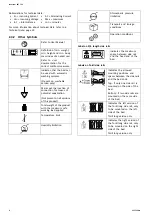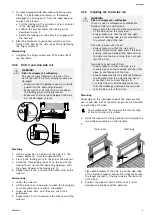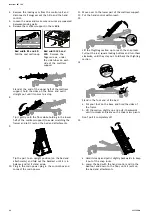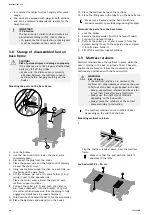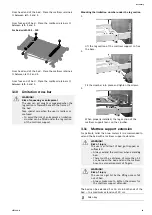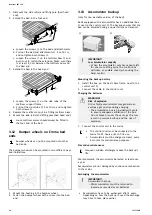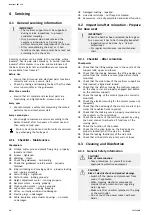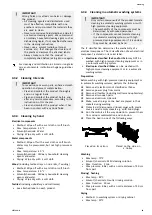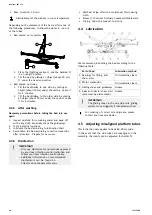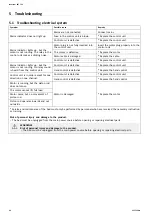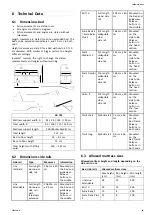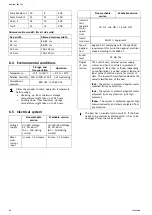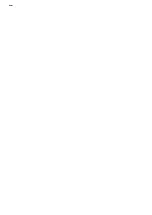
IMPORTANT!
Wrong fluids or methods can harm or damage
the product.
– All cleaning agents and disinfectants used
must be effective, compatible with one
another and must protect the materials they
are used to clean.
– Never use corrosive fluids (alkalines, acid etc.)
or abrasive cleaning agents. We recommend
an ordinary household cleaning agent such as
dishwashing liquid, if not specified otherwise
in the cleaning instructions.
– Never use a solvent (cellulose thinner,
acetone etc.) that changes the structure of
the plastic or dissolves the attached labels.
– Always make sure that the product is
completely dried before taking into use again.
For cleaning and disinfection in clinical or long-term
care environments, institutional hygiene guidelines
apply.
4.3.2 Cleaning Intervals
IMPORTANT!
To reveal loose or worn parts, enhance smooth
operation and prevent contamination:
– Clean and disinfect the product thoroughly
and on a regular basis.
– Clean and disinfect the product before and
after any service procedure, according to the
instructions in this chapter.
– Clean and disinfect the product when it has
been in contact with any body fluids.
4.3.3 Cleaning by hand
Electrical components
•
Method: Wipe off with a wet cloth or soft brush.
•
Max. temperature: 40 °C
•
Solvent/chemicals: Water
•
Drying: Wipe dry with a soft cloth
Metal components
•
Method: Wipe off with a wet cloth or soft brush.
Water may be pressurized, but not high pressure or
steam.
•
Max. temperature: 40 °C
•
Solvent/chemicals: Ordinary household cleaning
agents and water.
•
Drying: Wipe dry with a soft cloth
Wood
(including textile straps on side rails, if existing)
•
Method: Wipe off with a wet cloth or soft brush.
•
Max. temperature: 40 °C
•
Solvent/chemicals: Ordinary household cleaning
agents and water.
•
Drying: Wipe dry with a soft cloth
Textiles
(including upholstery and mattresses)
•
See attached label on each product.
4.3.4 Cleaning in automatic washing systems
IMPORTANT!
Only certain components of the product tolerate
cleaning in automatic washing systems or with
high pressure cleaning equipment.
– The washability of the components must be
determined by authorized personnel.
– If the components cannot tolerate cleaning
in automatic washing systems, with high
pressure cleaning equipment or if it is unclear,
they must be cleaned by hand.
The IP classification determines the washability of a
electrical component. The IP classification of each electrical
component is stated on its serial label.
•
Electronics classified IPx4 and/or IPx6
may NOT be
washed with high-pressure cleaning equipment or in
a automatic washing system.
•
Electronics classified IPx6w
can be washed with
high-pressure cleaning equipment or in a automatic
washing system.
Preparation
Before washing with high-pressure cleaning equipment or
in automatic washing systems, perform the following:
q
Remove all electronics not classified as IPx6w.
q
Remove power plug from mains.
q
Remove all textiles (including mattress and upholstery).
q
Remove all wooden parts.
q
Remove aluminium side rails.
q
Make sure all plugs on the bed are placed in their
sockets during washing.
q
Protected all disconnected (loose) plugs with plastic
covers and all empty sockets e.g. with blind plugs.
q
Run the motors all the way down/in to prevent them
from calcium sedimentation and corrosion.
q
Place the bed in one of the following ways:
Placed on its castors
Placed on the side on
a trolley
Washing
•
Max temp: 70°C
•
Solvent/ chemicals: Mild cleaning solution
•
Max. Duration: 2 min
•
Max pressure: 8 Bar, with a nozzle distance of 30 cm
from part
Rinsing/ flushing
•
Max temp: 85°C
•
Solvent/ chemicals: Neutral rinsing solution
•
Max. Duration: 20 sec
•
Max pressure: 8 Bar, with a nozzle distance of 30 cm
from part
Drying
•
Method: In washing system or drying cabinet
•
Max temp: 50°C
1577126-H
19


